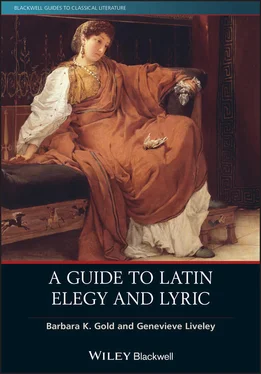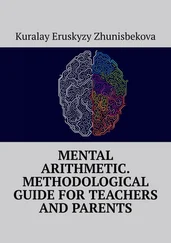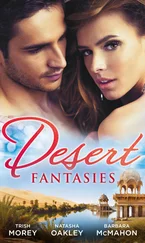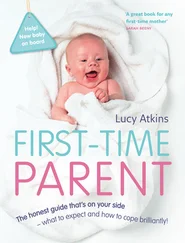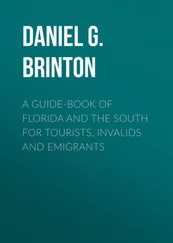In this light we may recall that a core part of the education of the Roman lyric and elegiac poets involved the study of rhetoric. Ancient handbooks on the art of rhetoric typically emphasize the importance of physical performance – including gesture, posture, voice, as well as costume – to aid the oral delivery of different styles of writing and (crucially) to produce the desired emotional affect upon an audience. Indeed, such rhetorical handbooks and training would have encouraged Roman poets and their readers to treat each poem as if it were a script to be acted out. We can see this clearly in a poem such as Propertius 1.3, in which, as Mary-Kay Gamel points out, Cynthia’s complaint at being woken from her sleep by her drunken poet–lover (Gamel 2012: 352): “can be performed as a fierce attack, a whining complaint, an overly tragic pose, or a moving lament. Each of these choices, valid in itself, affects the performer’s and audience’s interpretation of the poem’s overall meaning. Cynthia’s position, in molli fixa toro cubitum (‘planting her elbow on the soft bed,’ 34), is ambiguous, and the ‘stage directions’ carefully avoid specifying how these lines are to be delivered.” As this example shows, Latin elegy (and, indeed, Latin lyric too) is not only open to very different interpretations – to different, even contradictory readings and performances – it is also a richly dramatic form of poetry which brings its characters and scenes vividly to life.
It is perhaps unsurprising, then, that elegy in particular should have a great deal in common with another dramatic medium: Roman New Comedy. Balancing out the genre’s traditional focus on sadness and lament, Roman elegy draws upon several of the stereotypes and stock situations familiar from the world of comedy. The Roman comic playwrights Plautus and Terence provide plenty of such material for the elegists to re-use, but the Greek comic poet Menander (on whose plots Plautus and Terence base most of their own) is also a rich resource for the elegists. In fact, as Ovid makes clear in his Amores , it is Menander who defines the key dramatis personae which populate both Latin elegy and comedy ( Amores 1.15.17–18):
dum fallax servus, durus pater, improba lena
vivent et meretrix blanda, Menandros erit.
(While slaves are untrustworthy, fathers hard-hearted, bawds immoral,
and while courtesans flatter, Menander will live on.)
These stock comedic characters are certainly all found in Ovid’s Amores , together with the character role that is typically played by the elegiac poet himself – the adulescens amator or unhappy young lover. Ovid even uses this familiar character’s stock catchphrase to declare his unhappiness with life and love: “ me miserum !” – “poor me/woe is me!” ( Amores 1.1.25, 1.14.51, 2.5.8, 2.11.9, 3.2.69, 3.11.44). The fact that this catchphrase comes from the world of comedy reminds us not to take the poet too seriously when he says this, however. And the fact that this same phrase (and variations thereupon) already appears repeatedly throughout the canon of Latin love lyric and elegy gives us the strong impression that Ovid is well aware that whenever he says “ me miserum !” he is effectively speaking to a familiar lover’s “script.” Indeed, the phrase is already well used by Catullus (50.9, 76.19, 99.11) and features prominently in the opening line of Propertius’ programmatic first elegy: Cynthia prima suis miserum me cepit ocellis (“Cynthia first captured poor me with her eyes”).
The other comedy characters that Ovid lists in the Amores play similarly well-defined roles on the elegiac stage. The scheming and greedy elegiac puella is clearly based on the scheming and greedy meretrix or courtesan of New Comedy (see James 1998, 2012a). The lena (or madam) who occasionally manages her (e.g., Tibullus’ Phryne of 2.6, Propertius’ Acanthis of 4.5, and Ovid’s Dipsas of Amores 1.8) is also a familiar figure from New Comedy (see James 2003). The poet-lover’s rival (e.g., Tibullus 1.6, Propertius 2.8, Ovid Amores 1.4) – who is often portrayed as a wealthier man ( vir ) – is also a stock character from New Comedy. In fact, Roman elegy and Roman comedy share not only a common cast of characters and, occasionally, a common vocabulary and script; the two genres also share a common focus upon intimate, everyday scenes and domestic scenarios reflecting (albeit in stylized and fictionalized form) some of the socio-cultural realities of Augustan Rome (see Konstan 1986).
Cultural, Political, and Historical Contexts for Elegy and Lyric: Time and Place
In Kristen Ehrhardt’s useful formulation, the space in which Latin lyric situates many of its poems is “a mixed place” (Ehrhardt 2018). It typically blends together aspects of both Greece and Rome, city and countryside, the Greek symposium and the Roman banquet ( convivium ). Gardens, groves, fields, and forests provide a largely rural background for Horace’s Odes (sometimes pastoral, sometimes bucolic) although the characters who inhabit this space often seem to be slightly out-of-place in this Arcadian landscape – as if they are temporary visitors from the city rather than permanent residents.
In contrast, elegy predominantly stages its scenes and places its poetry within the physical and cultural context of the city (see Welch 2005; Harrison 2013). Its backdrop is contemporary Augustan Rome, and the lifestyles it represents are distinctly urban – and even urbane. Some scholars have characterized Latin love elegy as “pastoral in city clothes” (Veyne 1988: 101–115). But this description is misleading. It’s true that Tibullus often fantasizes about a simple life in the countryside, but the great majority of his elegies are actually based in the city (the rural exceptions are 1.1, 1.3, 1.10, 2.1, and 2.3). Sulpicia, too prefers the city to the countryside and complains loudly when her uncle plans to take her out of Rome to stay at his country house (3.14 and 3.15). For all of the elegiac poets, the city of Rome is the place to be. Propertius and Ovid even take recognizable Roman landmarks and use them to set the scene in their poems. Propertius (2.31.1–2) complains that he is late for a date with his puella (his girlfriend Cynthia) because he has been delayed en route by the ceremonial opening of the porticoes of Augustus’ restored temple of Palatine Apollo. He wryly advises Cynthia that Pompey’s portico offers the perfect environment for her to flaunt her charms (2.32.11–16) – but also suggests some of Rome’s other famous parks and gardens, porticoes, and colonnades, as places where puellae and their lovers like to hang out (2.23.5–6; see also 4.8.75–6). Ovid’s Amores and Ars Amatoria similarly recommend a variety of places in the city that are suitable for romantic and erotic encounters. Indeed, Ovid seems particularly (and cheekily) keen on landmarks that have a special connection with Augustus and the imperial family: he recommends various “pick-up” spots throughout the city of Rome ( Ars Amatoria 1.67–170), and recommends the Palatine portico of the Danaids ( Amores 2.2.3–4) and the Circus Maximus ( Amores 3.2). But he also points out to those interested in an illicit affair al fresco the porticoes of Octavia and Livia ( Ars Amatoria 3.391) as particularly good spots to pick up a lover.
Alongside these recognizable spatial markers for their poetry, the Roman elegists also use specific temporal markers. Identifiable historical events and dates are sometimes mentioned (e.g., the Augustan marriage laws, the Secular Games), and a few elegies represent what is known as “occasional poetry,” celebrating a particular event such as a promotion, or a birthday (Tibullus 2.2, Propertius 3.10, Sulpicia 3.14 and 3.15). The combined effect of these features is to offer the impression that elegy represents reality, that the elegiac world is a mirror to the “real world” of Augustan Rome (see Kennedy 1993: 92–93). And, although we should see this reality effect for what it is (or rather, for what it is not ), this phenomenon does invite us to look outside the poetry, to consider the wider historical and social world in which the ostensibly private and personal world of elegy is situated. Indeed, there are a number of ways in which lyric and elegy respond to the socio-cultural contexts in which they are produced, and the treatment of two themes are of particular importance to our understanding of these genres: rei publicae (politics) and puellae (girls).
Читать дальше
